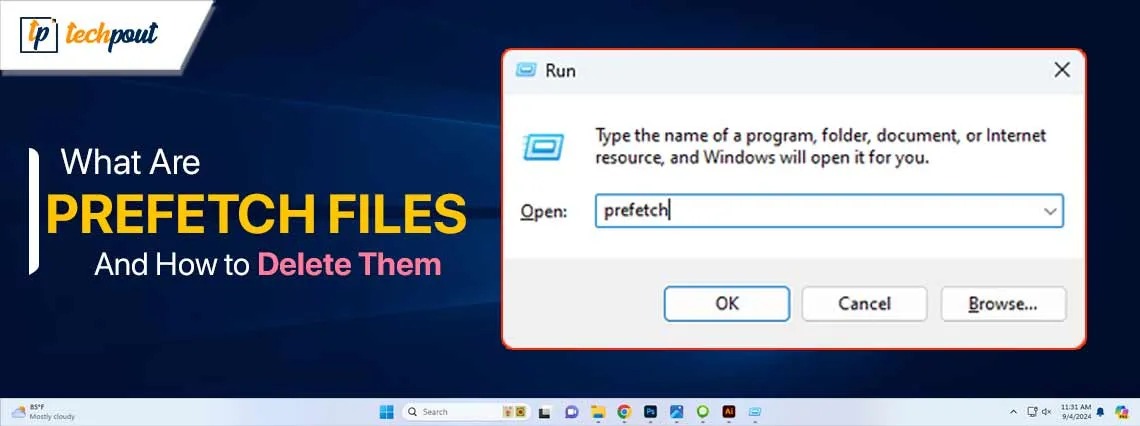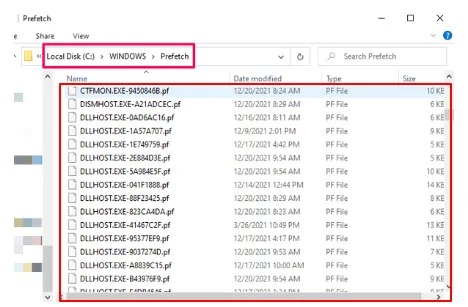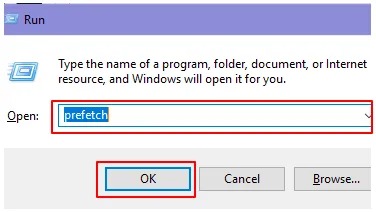What Are Prefetch Files and How to Delete Them In Windows PC

Windows creates prefetch files when you load an application for the first time from a particular location to save time when loading it the next time. Here is everything you need to know about these files, including how to delete them.
Prefetch files are an essential component of Windows’ memory management and optimization process. These files store the cache data of frequently used applications and programs so that they can load faster. However, a lot of confusion surrounds these files, and many users wonder how to delete the prefetch files if they wish to do so.
If you are also one of those users, this article is for you. Here, we are going to clear up all the confusion you may have about these files. Let us begin by understanding these files in more detail.
What Are Prefetch Files
As a part of Windows’ performance optimization and memory management process, your system creates a .pf file in the C:\Windows\Prefetch directory. These files are the prefetch files. The following screenshot shows a few examples of such files.

These files contain all the required information related to the executable application to reduce its boot time. This information includes the run count (the number of times the application runs on your computer), prefetch hash (log value or hash value various hash functions generate), extra files that load with the prefetch files, version of the prefetch (encryption when creating prefetch files), timestamp of the last time the file was executed on your device, and the volume device path where the execution took place.
The prefetch files, through all the above information, help understand the application behavior, perform forensic analysis of the application, and analyze the viruses that hamper the performance.
However, attackers can misuse these files to invade your system (for instance, they can place their DLL version higher in the search order so that it gets executed instead of the real DLL), prefetching can result in slowdowns if the data is already available in the cache, cache thrashing (displacement of useful data) can occur, instruction dependencies can render prefetching unnecessary or inefficient, and it can adversely impact the performance by consuming significant space and resources. These cons of prefetching instigate many users to delete the files.
However, is it safe to delete the prefetch files?
Well, there is no harm in deleting these files if you wish to do so to free up space and resolve various problems, such as file corruption and slow system performance. However, the applications may take a bit longer to load until the system creates new prefetch files.
Since deleting these files is safe, you may wonder how to perform this action. Let us discuss the same in the following section of this article.
Also know: How to Recover Deleted Files from Empty Recycle Bin
How to Delete Prefetch Files
The process of deleting these files is simple. All you have to do is follow these steps to delete them.
- The first step requires you to use the Win+R keyboard shortcut to open the Run utility.
- After the Run box appears on your screen, input the prefetch command in the Run box and click OK to access the prefetch folder.

- Now, input your administrator password or confirm the action (if prompted) to proceed to the next step.
- In this step, ensure you see the files with the .pf extension. If no such files appear, navigate to the View tab and enable the Hidden Items option.
- You can now select all prefetch files using the Ctrl+A keyboard shortcut.
- After selecting the files, you can press the Del key on your keyboard to delete the selected files.
You may get an error message if any of these files are in use when you try to delete them. In such cases, first, close the application that is using these files. If you want to delete the files permanently, you can do so by emptying the Recycle Bin.
Also know: How to Fix Damaged RAR Files
Prefetch Files Deleted Successfully
Prefetch files help applications load faster. However, they may sometimes cause complications, making you want to delete them. We hope you are no longer confused about the prefetch files and their deletion. However, if you need more assistance with these files or have suggestions to improve this guide, you can write us a comment. Also, we would be glad if you share this article with those who may find it useful.


